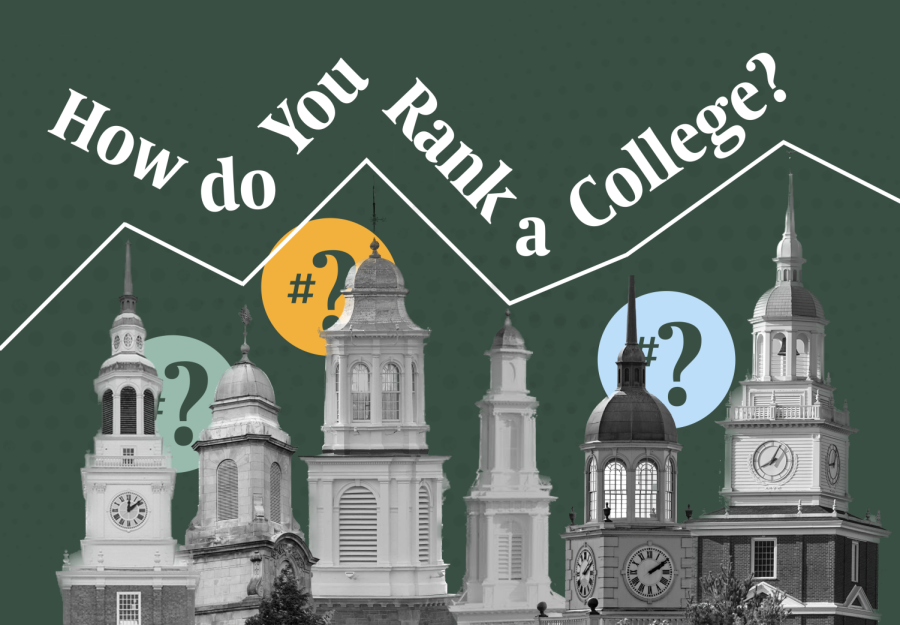The Impossibility of Quantifying Prestige: Can you Really Rank a College?
It’s that time of year again: high school seniors across the globe are furiously clicking the refresh button on their student portals to view their admissions decisions. After what feels like an eternity spent visiting potential schools, meeting with guidance counselors and writing, everything that students have been working towards is about to be determined by a single word. Hopefully, that word is congratulations. As soon as this validating remark flashes across the student’s screen, a surge of emotions are sure to stream forth. Haven’t we all seen those deeply moving “College Decision Reaction” videos? The ones that feature nervous teenagers leaping out of chairs and jumping for joy as they attempt to digest the news of their acceptance. However, in these videos, it can be hard to tell whether the soon-to-be college student is experiencing relief, fear, excitement, confusion or all of the above. On the one hand, their hard work has finally paid off–their future is a little less uncertain–but on the other hand, their life, the only one that they have known for eighteen-some-odd years, is about to change forever. It is time for them to face a brand new challenge all on their own.
Long story short, receiving college admissions decisions can be an emotional rollercoaster. Yet before students can even enter the amusement park, that is, apply to schools, they have to narrow down where they want to submit applications. Sure, there are a few students who decide to forgo sleep for the first semester of their senior year and submit applications to an excessive number of institutions. But this is a rare occurrence. For the majority of applicants, the College Board recommends submitting around 5 to 8 applications to a mix of safety, match, and reach schools. Here is where things can get tricky. With the number of applications to undergraduate institutions in the U.S. consistently on the rise, it is becoming harder and harder for applicants to gain acceptance into certain schools. The fear of rejection is a very real, very powerful concern. Now more than ever, students must be strategic and selective when application season rolls around.
But that is not all. In addition to the fear of rejection lies a struggle that applicants have been facing for decades: the struggle of making important choices.
Being able to choose where you apply to college is a privilege that comes with great responsibility. Before hastily firing off a round of applications, students have to take a long hard look at who they are and who they wish to become. They have to identify their goals for the future and then hand-pick the schools that will help them achieve these goals. I speak from personal experience when I say that this is no easy feat. With nearly 4,000 postsecondary institutions in the United States alone, the options are seemingly endless. In order to avoid feeling completely overwhelmed, students have to be prepared to narrow down their wants and needs before conducting research on individual institutions.
Yes, I said it. Research. Now I know that “research” might not be every high school senior’s favorite word, but I believe that it can really make or break the college search process. Students who try to short-cut this critical process by simply scrolling through an online list of college rankings are making a huge mistake. Compiling a list of potential schools based on arbitrary rankings from sources that are often inaccurate is the wrong way to go about doing research. Let me tell you why.
On November 16 of last year, Yale Law School Dean Heather Gerken ceased to cooperate with the U.S. News & World Report, an American media company well-known for its extensive rankings of colleges and universities. Over the next three months, more than 40 other law schools and several medical schools joined the rebellion and stopped sharing their data with the U.S. News & World Report. Members of the higher education community cited a few major concerns as they sought to explain the mass withdrawals. According to the Wall Street Journal, Many contended that the rankings were “opaque, favored the wealthiest schools and promoted practices that didn’t benefit students.” Doctored data submissions by institutions seeking to boost their standings and the questionable ways in which the U.S. News and World Report interpret this data are also cause for concern. While the majority of undergraduate institutions have yet to sever ties with the U.S. News & World Report, many believe that it is only a matter of time before they follow suit.
Ultimately, I believe that quantifying the worth of an institution of higher education is essentially impossible. After all, colleges and universities are intricate ecosystems that offer each and every one of their students a unique experience. Last I checked, experiences are invaluable. They defy quantification. Schools, just like people, deserve to be treated as more than just numbers.

Abby Harn is a sophomore from San Antonio, TX concentrating in international relations and economics. She has previously served as a staff writer for the...

Ethan Cherry is a senior from Baltimore, MD studying political science and architecture. He has previously served as multimedia manager, news editor, assistant...










